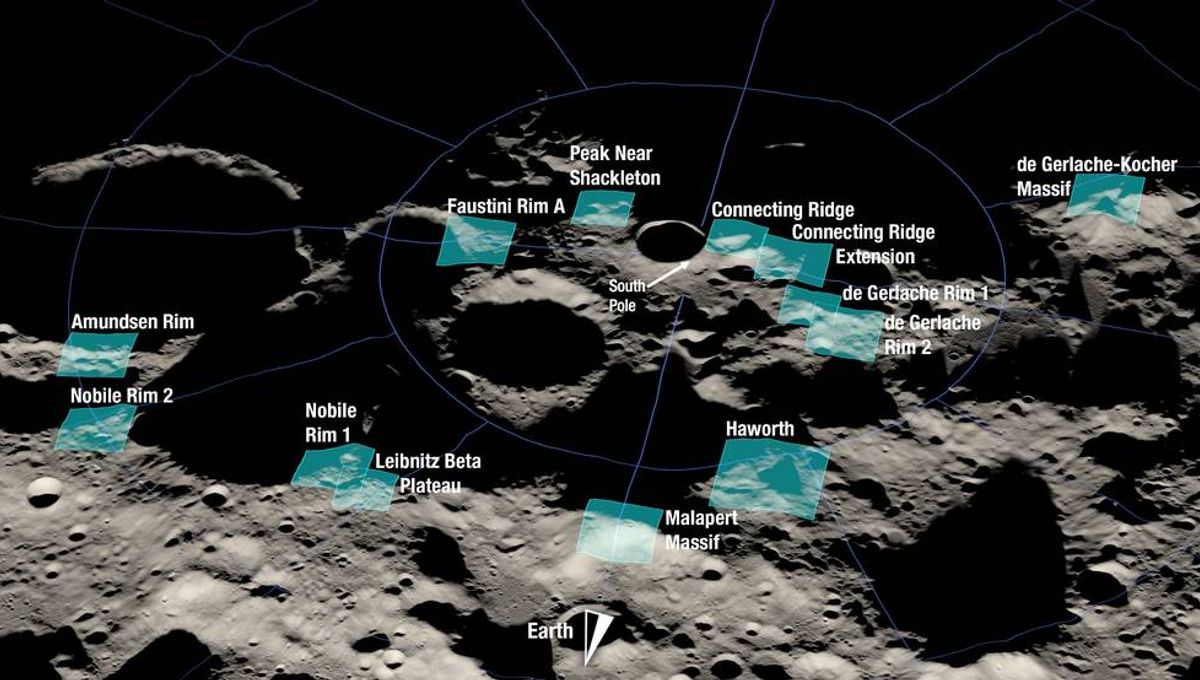
NASA has prepared a shortlist of possible sites for the next Moon landing, expected to happen with the Artemis III mission which is scheduled to launch in about three years. The 13 sites are all located within six degrees of latitude from the Lunar South Pole, a region unexplored by humans. The area is rich in water ice, a crucial resource for the creation of long-term settlements on the Moon.
“Selecting these regions means we are one giant leap closer to returning humans to the Moon for the first time since Apollo,” Mark Kirasich, deputy associate administrator for the Artemis Campaign Development Division at NASA Headquarters in Washington, said in a statement. “When we do, it will be unlike any mission that’s come before as astronauts venture into dark areas previously unexplored by humans and lay the groundwork for future long-term stays.”
The candidates are:
Faustini Rim A, Peak Near Shackleton, Connecting Ridge, Connecting Ridge Extension, de Gerlache Rim 1, de Gerlache Rim 2, de Gerlache-Kocher Massif, Haworth, Malapert Massif, Leibnitz Beta Plateau, Nobile Rim 1, Nobile Rim 2, and last but not least Amundsen Rim.
These are named after polar explorers, chemists, philosophers, and even a Jesuit astronomer.
All of the landing sites are considered scientifically significant and all include (or are near) regions in permanent shade. The best option for landing also depends on when the mission launches. Different areas would be better suited for a safe landing. The astronauts will spend up to 6.5 days on the surface.
“Several of the proposed sites within the regions are located among some of the oldest parts of the Moon, and together with the permanently shadowed regions, provide the opportunity to learn about the history of the Moon through previously unstudied lunar materials,” said Sarah Noble, Artemis lunar science lead for NASA’s Planetary Science Division.
Each candidate site will be discussed and evaluated with the broader science and engineering communities at conferences and workshops. NASA intends to collect this feedback to arrive at the final selection for the landing, also working with SpaceX, who will be using their Starship as a landing vehicle.
“Developing a blueprint for exploring the solar system means learning how to use resources that are available to us while also preserving their scientific integrity”, said Jacob Bleacher, chief exploration scientist for NASA. “Lunar water ice is valuable from a scientific perspective and also as a resource, because from it we can extract oxygen and hydrogen for life support systems and fuel.”
Artemis will see the return of humanity to the Moon over four decades after Apollo 17. It will see the first woman and the first person of color putting their foot on the Moon. The first space test for the program is next week, with the launch of the uncrewed Artemis I.
Source Link: Humans Will Next Land On The Moon In One Of These Locations